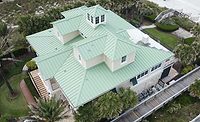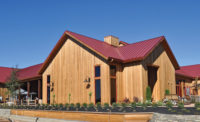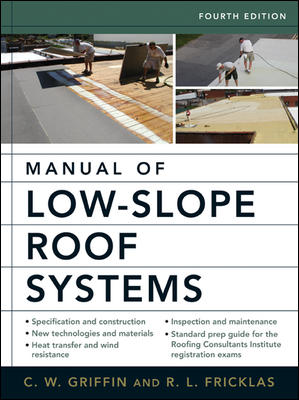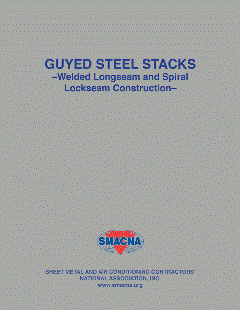Residential Roofing Design Trends: What’s Hot in 2020

The New Year is underway and new trends in architecture and roofing are taking shape. Contractors working in the residential side of the business may be noticing aesthetic shifts and wondering how popular those trends will become, as well as what drives them in the first place.
When looking at new roofing trends and ascertaining what drives them, experts identify cause and effect relationships between macro influences, consumer desire and behaviors, and trends related to design. Macro influences affect how consumers see, feel about, and interact with the world. Examples of macro variables include economic shifts, political landscapes, environmental concerns, cultural events, societal norms and technological innovations. These directly affect consumer desires and, subsequently, behavior. Once consumer behavior changes, so too does product design. Roofing materials are some of the products whose designs are ultimately affected.
Today, there are a number of home architecture shifts directly affecting roofing. Many are emerging as a result of consumers moving through an era of pared down styling and less ostentatious design. Macro level influences that have contributed to this pared down design are the prevalence in mobile devices and technology that have enabled an onslaught in content, advertising and information. This constant information gleaned from the ever-increasing amount of time consumers spend on screens results in a desire among consumers for sensorial relief in other key areas of life. The home is one such area that consumers have increasingly wanted to alter, reducing clutter and visual stimulation, as a counterpoint and respite to the constant barrage of information received daily.
One growing architectural movement seen as a direct result of these macro-level influences is the influx in gabled modern homes as well as in a variety of pitched roof contemporary styles. Perhaps a lesser known mass-market design currently, the gabled modern home style is on the rise in progressive neighborhoods and is popular among custom and spec home builders. A cousin to the contemporary farmhouse, common characteristics of the gabled modern home include: a minimal silhouette; a simple gabled roof with medium to low pitch; extremely minimal or eliminated low overhang of eaves; a highly austere approach to exterior features; reduced color palettes (one or two colors); and limited use of exterior faced materials (usually one or two, similar to the color palettes).
Another notable architecture and roofing trend is the increasing use of the roof as livable use space. Because urban areas are characterized by higher densities and escalating lot prices, outdoor land space is often sacrificed for square footage in the home. In urban areas, rooftop decks become a primary outdoor space, but typically require modern type builds with flat roofs. However, with an increase in the gabled modern home style, decks and balconies are increasingly being cut into the roofline with the added benefit of some outdoor privacy.
Roof design is also moving toward an increasing focus on beauty and design. With more builders utilizing roof space as living space, the look of the roof itself becomes a bigger priority. Another trend linked directly to this is consistent use of color from the top to the bottom of the home. Currently uptrending among contemporary architects and builders, the single-color home profile, where the roof matches the exterior envelope and trims, is evident on gabled modern homes. However, a full range of home architecture styles, including traditional, are also demonstrating this aesthetic. The visual effect is one in which the viewer’s eye is drawn to the entire home silhouette as the primary focus rather than to the space just below the roofline.
Finally, with a growing emphasis on the uniform, single-color home exterior, a trend is emerging toward a single material utilized on the exterior walls and roof. Many people envision this single material aesthetic when thinking of a log cabin or commercial structure; however, it’s also on the rise among progressive spec and custom builds across the U.S. While wood and standing seam metal have been the materials most used to date, all-over clay tile exteriors are also trending upward, indicating that clay tile roofing is well positioned to be an increasing part of this growing movement.
The revival of the shake clay roofing tile profile is emerging at the fringes of the gabled modern and contemporary home styles as part of the single material use trend. For the first time, shake tile is being associated with modern, clean, contemporary styles. Additionally, these all-over exterior tile applications ultimately point to a rise in new roof tile profiles, especially those that reflect visually interesting, dynamic patterns.
While macro-level influences that shift architecture and roofing can’t always be easily predicted, it is fascinating how much they influence our industry and even our day-to-day projects. When a specific material or profile is specified for an installation, there are often much larger forces at play.
Looking for a reprint of this article?
From high-res PDFs to custom plaques, order your copy today!








